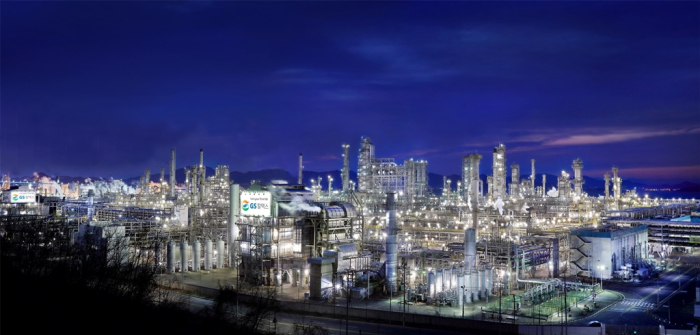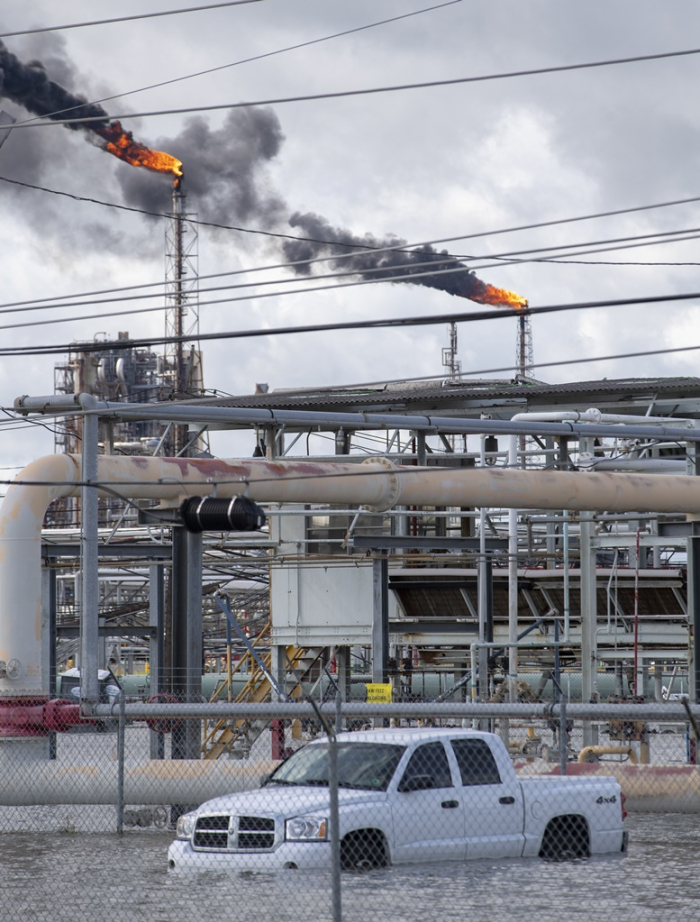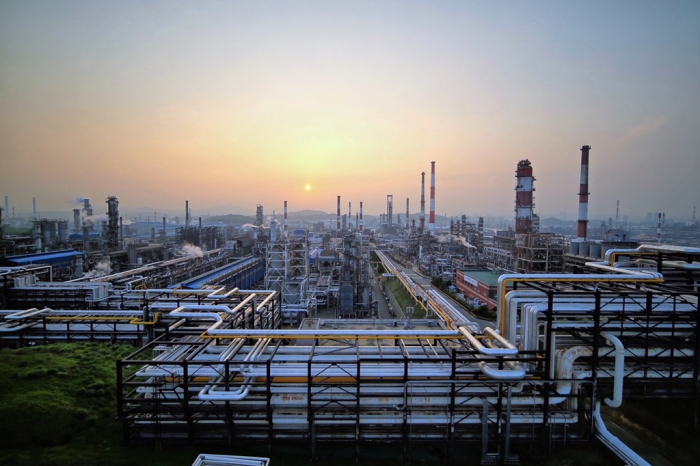Refineries
Korean refiners ramp up runs to pre-COVID-19 level
September refinery runs estimated to have risen to 82-83%, similar to July 2019, as exports jump 79%
By Oct 06, 2021 (Gmt+09:00)
4
Min read
Most Read
LG Chem to sell water filter business to Glenwood PE for $692 million


Kyobo Life poised to buy Japan’s SBI Group-owned savings bank


KT&G eyes overseas M&A after rejecting activist fund's offer


StockX in merger talks with Naver’s online reseller Kream


Mirae Asset to be named Korea Post’s core real estate fund operator



South Korean refiners ramped up runs of their crude distillation units (CDUs) to a level before the outbreak of the COVID-19, probably exceeding 80% last month for the first time in one and a half years thanks to a global economic recovery.
Their earnings are also expected to strengthen in the second half on increasing petroleum product demand, improving refining margins and rising oil prices.
PUMPING UP RUNS
An average utilization rate of four refiners in South Korea was estimated at around mid- to low-80% in September, according to the industry sources on Oct. 6.
GS Caltex and S-Oil Corp. were known to have operated their CDUs at around 90%, while Hyundai Oilbank has understood to have run its refinery at mid-80%. SK Innovation Co.’s operating rate was around mid-70%, but the country’s largest refiner considered raising the run depending on the market conditions, according to the sources.
The average runs of the four refiners was calculated at 82-83% in September, based on these operating rates. That was similar to 82.8% in July 2019 when the world was free from the COVID-19. Local refiners had operated their CDUs at around 70% from April 2020 to August 2021.
South Korean four refiners’ average CDU run
Unit: %
Source: Korea National Oil Corp
Graphics by Jerry Lee
Supply, however, failed to catch up with the rising demand. Some of US refiners in the Gulf of Mexico still struggled to resume production after a Hurricane hit the region. China is reducing crude oil import quotas for independent refiners, also known as teapots, while cutting petroleum oil export quotas for state-run refiners in a move to meet President Xi Jinping’s goal of achieving carbon neutrality by 2060.

TRIPLE BOOSTS
Local refiners are slated to raise production to meet demand that help improve refining margins and their earnings for the rest of the year.
The benchmark Singapore gross refining margin against Dubai more than doubled to a two-year high of $6 a barrel in the last week of September from $2.9 in the fourth week of August. Margins need to be around $4 for Asian refiners to break even, according to the industry sources.
Crude prices also surged, helping South Korean refiners improve inventory gains. U.S. West Texas Intermediate (WTI) on Oct. 5 jumped more than 2% to as high as $79.48 per barrel, the most in nearly seven years, while Brent crude touched a three-year peak of $83.13.
Earlier this week, the Organization of the Petroleum Exporting Countries (OPEC) and allies led by Russia, known as OPEC+, also decided to keep increasing oil output gradually, defying pressure from some countries for a bigger boost to production.
South Korean refiners are predicted to keep enjoying bullish factors such as higher crude prices and strong refining margins until the early next year, sources said.
“Some speculate crude oil prices could hit, if this coming winter is colder than previous years,” said another source.

Refiners are likely to benefit from soaring natural gas prices amid a severe shortage of electricity in China, industry sources said.
Natural gas is mainly used for heating in winter and the jump in its prices are expected to boost demand for other heating fuels such as kerosene and gasoil, they explained.
“Given low taxes on natural gas, kerosene and diesel will not be able to totally replace the gas. But if the gas prices maintain the current rise, that will be enough to boost demand (for those heating fuels),” said an industry source.
South Korean refiners are forecast to report a combined operating profit of 6.5 trillion won ($5.4 billion) this year, a sharp turnaround from a 5 trillion won loss in 2020.
SK Innovation is expected to post a 1.9 trillion won profit, while S-Oil is expected to reap a 2.1 trillion won profit, according to financial data company FnGuide Inc. GS Caltex and Hyundai Oilbank, which are not listed, are forecast to report a 1.5 trillion won and a 1 trillion won in profit.
Write to Jeong Min Nam at peux@hankyung.com
Jongwoo Cheon edited this article.
More to Read
-
 RefineriesKorea refiners' recovery accelerates on strong margins
RefineriesKorea refiners' recovery accelerates on strong marginsSep 13, 2021 (Gmt+09:00)
3 Min read -
 EarningsKorean refiners log $3.4 bn profit on non-refining business
EarningsKorean refiners log $3.4 bn profit on non-refining businessAug 09, 2021 (Gmt+09:00)
3 Min read
Comment 0
LOG IN


